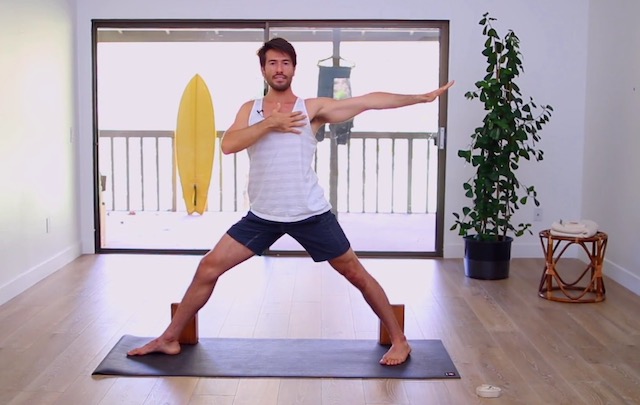
Using Yoga to Refresh the Mind & Connect to a Higher Level of Consciousness.
Consider your body as a storage unit where all of your experiences—waking and sleeping, conscious and unconscious—are stored.
Any information the brain processes has some physical implications, even the experiences you dream up. For example, when you’re having an especially unpleasant dream, the nervous system doesn’t know it’s dreaming. You may wake up in shock, in a cold sweat, or even crying. Of course, you quickly realize it was “just a dream,” and carry on as usual. However, even this experience is stored in the body.
When we practice conscious movement, we have the ability to wipe the slate clean.
The Mandukya Upanishad explores the four states of consciousness: waking, dreaming, deep sleep, and pure consciousness. The teachings discuss the experience of feeling that our “waking life” is more real than our dreaming state. Furthermore, the drama of our waking life will one day cease like the dream, and we’ll wake up to a new reality and a new existence: “pure consciousness.”
In the meantime, we can practice conscious movement to cultivate a higher awareness and help liberate the body of its ailments in order to feel healthy, fit, confident, balanced, flexible, and strong. Here are four ways your practice can help to refresh your mind, create new patterns of movement to help deepen your practice, and tune into a higher state of consciousness:
1. Pay attention to how the movement feels. The ability to feel is a learned function. When you practice paying attention to how your body feels, the brain is actually creating new connections at a rate of about 1.8 million per second. You’re literally creating new patterns instead of getting stuck in a rut of routine movements. The implications for this are huge: learn to move different; learn to live different.
2. Start slower, then start to move at a desired pace. In studies done on the movement involved in walking, if the subject started slowly on a treadmill, and paid attention to the feeling of their feet before speeding it up, they were able to move faster, longer, stronger, and generally with less pain, if there was pain previously.
3. Increase proprioception. When you practice expanding fully into your body by going slower and focusing on how it feels, you’re able to better feel your body in space and its appropriate relationship to the world around you. You’re literally learning to become who you are meant to be by enhancing your proprioception. Practice feeling your body doing a certain action in a yoga pose, like tracking your front knee with your center ankle and hip in Warrior 2 and Extended Side Angle, and then look in a mirror to see if what you’re feeling is actually what’s happening. You’ll be retraining your proprioception and expanding your consciousness.
4. Recommit to feeling and going slowly while learning new actions in the pose. When you move quickly, there is less room for learning. If you’re interested in deepening your practice and moving past what you already know, slow and steady wins the race. Each time we attempt an asana, we should look at it with fresh eyes, as if it is the first time we’re doing it. If we’re learning new actions and attempting them with this attitude, we will be expanding our awareness of the body’s inner landscape.
When we enhance our internal map, the Yoga Sutras say that we’re actually beginning to understand the cosmos and the nature of reality. The Sutras also suggest that the body is a microcosm, and through practicing in the manner suggested, we will deepen our connection with prana and reach higher states of consciousness. Each time we practice, we expand our consciousness by moving past the old understanding instead of simply moving from memory.
This guide is meant only to refine your asana practice and achieve higher states of consciousness through a movement practice. Eventually, through steady practice, the aspirant will apply their knowledge of movement to a pranayama practice and be able to seek even further levels of consciousness.
Here’s a 45-minute yoga practice that will give you an introduction into practicing this way:
~
~
~
Author: Tim Senesi
Image: YouTube still
Image: YouTube still

No comments:
Post a Comment